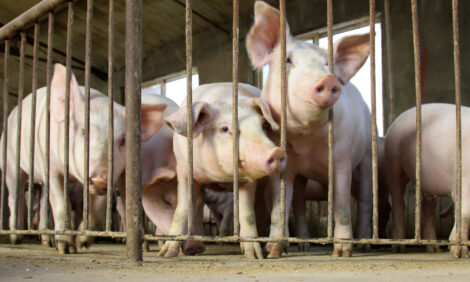



What Does the Sequester Mean for US Agriculture?
ANALYSIS — President Obama continues to seek a compromise to the latest US Congressional budget battle that will end the sweeping, across-the-board government spending cuts now taking effect, writes Sarah Mikesell, 5m senior editor.White House officials have said to expect across the board reductions that could slash 750,000 jobs. Both sides appear to have dug their heels in as federal workers prepare for furloughs and the nation prepares for cuts to government services, accounting for $85 billion in spending cuts through Sept 30, the end of the government’s fiscal year.
So What’s It Mean for US Agriculture?
On Friday, the US Department of Agriculture Secretary Tom Vilsack (pictured above) spoke to farmers and agribusiness attendees at the 2013 Commodity Classic, the annual association meeting for corn, soy, wheat and sorghum, to explain some of the consequences of the sequester taking effect.
Secretary Vilsack said the sequester will reduce USDA’s operating budget by about $1 to $1.5 billion. And the way it’s structured will impact every line item of the budget, and every account that's not exempted by Congress has to be cut by a certain percentage.
*
"It's estimated that we're looking at potentially $8 billion less in exports."
“It's not a situation where we can take money from conservation and move it over into the Foreign Ag Service to make sure that trade isn’t disrupted or take money from a nutrition account and put it into food safety,” he said. “Every account, every mission area is treated separately, but with the same level and percentage of cut.”
He estimated the cuts will equal 5 to 8 per cent of the total budget, but since those are annual numbers and there’s only six months left of the fiscal year, it's like cutting 10 to 16 per cent in terms of the remaining money.
He said a direct consequence to the Farm Service Agency is that there will be $34 to $35 million fewer credit dollars available for producers, so about 1,500 farmers who need credit to operate or own a farm will not have access to the credit.
“It means that those folks at the Natural Resources Conservation Service (NRCS) who want to do work on conservation will have to say to 2,600 people, "we simply don't have the resources to be able to even help you get a conservation plan," and to another 11,000 to 12,000 people, "we've got a plan, but we won't have the resources to fund the plan."
The Foreign Ag Service will have fewer dollars to use in trade promotion, and they won't be able to help small businesses.
“The facts are that it will probably mean about half of a billion fewer trade opportunities, and Lord knows what it will do with our competitors and their ability to go into foreign markets and suggest that, perhaps, the American market is not as certain as it once was, and that may have long-term impacts,” Secretary Vilsack said.
USDA will need to let their land-grant university partners know that there's going to be about $60 million fewer for research and probably 100 projects that were approved but won’t be able to be funded, he said.
“It'll mean those folks working in nutrition; they'll have to tell 600,000 women, infants and children that they won't be able to access the WIC program’s nutritional assistance because they're going to be put on a waiting list,” he said. “It means to all those folks who work or rely on meat to be processed, the pork to be processed, the poultry to be processed, the eggs to be processed that there will be a disruption in that process.”
He said to make no mistake about it, there’s no flexibility in the sequester language to move money around to avoid furloughs of food inspectors.
“When I do, it's not just an inspector who’s impacted, the roughly 8,000 inspectors in over 6,600 inspection facilities, it's the 250,000 other folks working in those facilities whose lives are also going to be impacted,” he said. “It's going to be a loss of export opportunity because product will not be produced on those days when inspectors are furloughed because no meat can be processed on those days. It's estimated that we're looking at potentially $8 billion less in exports.”
He said during the last three years, the USDA has been reduced costs in anticipation of these cuts. It has involved closing 250 offices and labs; reducing the workforce by 8 per cent; saving millions of dollars by strategically sourcing purchases of technology and telecommunications equipment; condensing rental space; cutting down travel, supplies and conferences.
“The sum total of all that we've done up to this point is at least, conservatively, $700 million in savings and probably closer to $1 billion dollars in savings," he said. “So when they come and they say take another 5 to 6 per cent and do it in a six or seven month period and do it in every line item there's just not a lot that can be done.”
Vilsack said this is a difficult situation that’s going to require a lot of thought and has already required an enormous amount of time. It’s taking time away from the critical issues that are important to agriculture - climate change, trade, research, credit, the Farm Bill, crop insurance and exports, he said.







